
Mount Vernon: The Cultural Heart of Baltimore
Discover Baltimore's Mount Vernon: A Historic Neighborhood Rich in Culture, Art, and Culinary Delights.
Welcome to Mount Vernon, the cultural epicenter of Baltimore, Maryland. This historic neighborhood is a treasure trove of architectural beauty, artistic heritage, and culinary delights, making it an essential stop for any visitor to the city. Mount Vernon is renowned for its stunning 19th-century mansions, cobblestone streets, and the iconic Washington Monument, the first monument dedicated to George Washington. This area boasts a rich history, with many buildings and landmarks reflecting the opulence and grandeur of Baltimore's past. As you walk through the neighborhood, you'll find yourself transported to a different era, surrounded by beautifully preserved structures and charming parks. Art lovers will find Mount Vernon particularly captivating. The Walters Art Museum offers an impressive collection of art spanning over seven millennia, from ancient artifacts to contemporary masterpieces. The nearby Peabody Institute, part of Johns Hopkins University, is a world-renowned music conservatory and performance venue, hosting concerts and events that attract visitors from around the globe. For food enthusiasts, Mount Vernon is a culinary paradise. The neighborhood is home to a diverse array of restaurants, cafes, and bars, offering everything from gourmet dining to casual eats. Whether you're in the mood for international cuisine or local delicacies, you'll find plenty of options to satisfy your taste buds. Don't forget to explore the local shops and boutiques, where you can find unique souvenirs and gifts to remember your visit.
Local tips in Mount Vernon
- Visit the Washington Monument and climb to the top for a panoramic view of Baltimore.
- Check out the event schedule at the Peabody Institute for live music performances.
- Spend an afternoon exploring the Walters Art Museum, which offers free admission.
- Stroll through Mount Vernon Place, a beautifully landscaped park perfect for relaxation.
- Try the local cuisine at one of the neighborhood's many acclaimed restaurants.
Mount Vernon: The Cultural Heart of Baltimore
Welcome to Mount Vernon, the cultural epicenter of Baltimore, Maryland. This historic neighborhood is a treasure trove of architectural beauty, artistic heritage, and culinary delights, making it an essential stop for any visitor to the city. Mount Vernon is renowned for its stunning 19th-century mansions, cobblestone streets, and the iconic Washington Monument, the first monument dedicated to George Washington. This area boasts a rich history, with many buildings and landmarks reflecting the opulence and grandeur of Baltimore's past. As you walk through the neighborhood, you'll find yourself transported to a different era, surrounded by beautifully preserved structures and charming parks. Art lovers will find Mount Vernon particularly captivating. The Walters Art Museum offers an impressive collection of art spanning over seven millennia, from ancient artifacts to contemporary masterpieces. The nearby Peabody Institute, part of Johns Hopkins University, is a world-renowned music conservatory and performance venue, hosting concerts and events that attract visitors from around the globe. For food enthusiasts, Mount Vernon is a culinary paradise. The neighborhood is home to a diverse array of restaurants, cafes, and bars, offering everything from gourmet dining to casual eats. Whether you're in the mood for international cuisine or local delicacies, you'll find plenty of options to satisfy your taste buds. Don't forget to explore the local shops and boutiques, where you can find unique souvenirs and gifts to remember your visit.
Iconic landmarks you can’t miss
Fort McHenry National Monument and Historic Shrine
Discover the rich history and scenic beauty of Fort McHenry, the birthplace of the Star-Spangled Banner, in Baltimore, Maryland.

Edgar Allan Poe's Grave
Explore the haunting beauty of Edgar Allan Poe's Grave, a historical landmark in Baltimore, and immerse yourself in the legacy of America's master of the macabre.

Washington Monument
Explore the majestic Washington Monument in Baltimore, a historic landmark symbolizing national pride and offering stunning views of the city.

Garrett Jacobs Mansion
Explore the Garrett Jacobs Mansion, a historic treasure in Baltimore showcasing stunning architecture and rich stories from the Gilded Age.

Mount Clare Museum House
Discover the elegance of 18th-century Maryland at Mount Clare Museum House, a historic mansion showcasing rich American heritage.

Marquis de Lafayette Statue
Explore the Marquis de Lafayette Statue in Baltimore, a symbol of friendship and bravery, nestled in the heart of historic Mount Vernon.

West Mount Vernon Place
Experience the serenity of West Mount Vernon Place, a historic park in Baltimore featuring the iconic Washington Monument and lush landscapes.

John Eager Howard Statue
Explore the John Eager Howard Statue, a historical landmark in Mount Vernon, Baltimore, reflecting the city's rich heritage and architectural splendor.

Mount Vernon Place
Explore Mount Vernon Place: A historical park in Baltimore featuring lush gardens, iconic monuments, and a vibrant cultural scene.

North Washington Place
Experience the serene beauty of North Washington Place, a picturesque park in Baltimore's Mount Vernon neighborhood, perfect for relaxation and exploration.

Unmissable attractions to see
The Maryland Zoo in Baltimore
Explore diverse wildlife and engage with nature at The Maryland Zoo in Baltimore, a top non-profit attraction dedicated to conservation and education.

Druid Hill Park
Explore Druid Hill Park, Baltimore's historic urban oasis, featuring lush landscapes, recreational activities, and a vibrant community spirit.
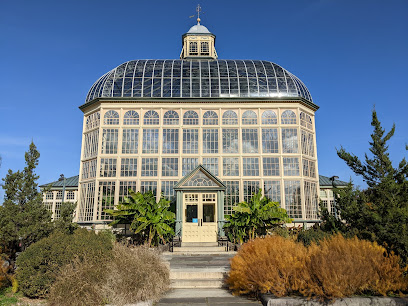
The Walters Art Museum
Explore The Walters Art Museum in Baltimore, where art from ancient to modern times inspires and captivates visitors of all ages.

Port Discovery Children's Museum
Explore the wonders of childhood at Port Discovery Children's Museum, where imagination and learning come to life for kids and families in Baltimore.

American Visionary Art Museum
Experience the extraordinary at the American Visionary Art Museum, Baltimore's treasure of creative expression and self-taught artistry.

B&O Railroad Museum
Discover the fascinating history of rail transport at the B&O Railroad Museum, a must-see attraction in Baltimore for history and train enthusiasts.

Baltimore Museum of Art
Discover the Baltimore Museum of Art: A Free Cultural Treasure with Masterpieces from Matisse to Picasso in an Inspiring Setting.

Baltimore Museum of Industry
Discover the vibrant industrial history of Baltimore at the Baltimore Museum of Industry, where interactive exhibits and rich artifacts await your exploration.

Historic Ships in Baltimore
Discover Baltimore's maritime legacy at the Historic Ships in Baltimore – a captivating exploration of naval history in the heart of Inner Harbor.

Washington Monument
Explore the historic Washington Monument in Baltimore, a stunning tribute to George Washington surrounded by beautiful parks and vibrant culture.

The Baltimore Basilica
Experience the beauty and history of The Baltimore Basilica, America's first Catholic cathedral, a serene landmark in the heart of Baltimore.
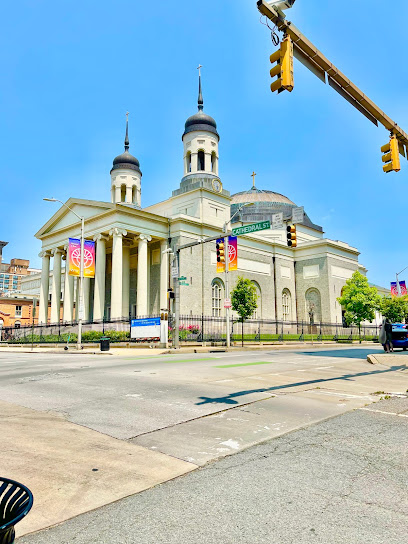
Holocaust Memorial
Explore the Holocaust Memorial in Baltimore, a poignant tribute honoring the victims of the Holocaust and promoting reflection on human rights and tolerance.

Star Spangled Banner Flag House
Discover the birthplace of the Star Spangled Banner and explore the rich history of America's national anthem at this iconic museum in Baltimore.
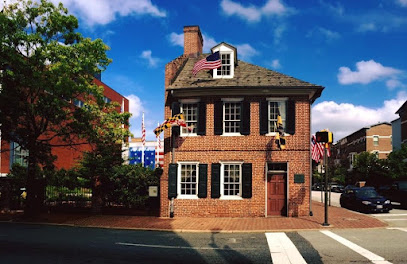
Mount Clare Museum House
Discover the rich history and charm of Mount Clare Museum House in Baltimore, a beautifully preserved glimpse into 18th-century life and culture.

Mount Vernon Place
Discover the charm of Mount Vernon Place, a historic park in Baltimore featuring lush gardens, stunning monuments, and vibrant cultural activities.

Essential places to dine
Mount Vernon Marketplace
Discover a vibrant food court in Baltimore's Bromo Arts District with diverse eateries at Mount Vernon Marketplace.

The Owl Bar
Discover the charm of The Owl Bar in Baltimore - where delicious grill cuisine meets crafted cocktails in a cozy lounge atmosphere.

The Helmand
Discover authentic Afghan cuisine at The Helmand in Baltimore’s historic Mount Vernon neighborhood; an unmissable dining experience.

The Bun Shop
Discover The Bun Shop: A delightful blend of eclectic flavors in Baltimore's Bromo Arts District, perfect for every foodie.
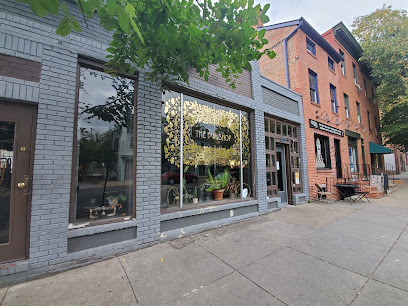
Restaurante Tio Pepe
Discover authentic Spanish cuisine at Restaurante Tio Pepe in Baltimore's Mount Vernon – where every dish tells a flavorful story.
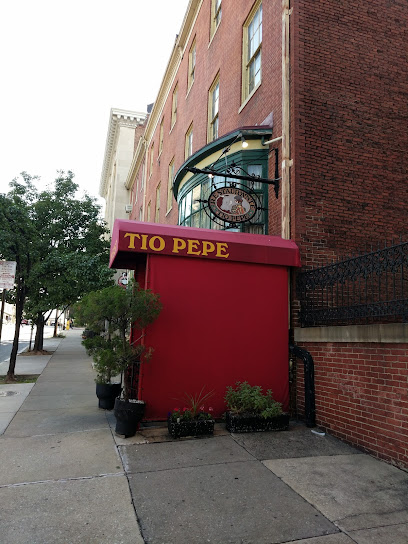
Dooby's
Discover the cozy charm of Dooby's Cafe in Baltimore – where breakfast dreams come true with locally sourced flavors.

Never On Sunday
Experience authentic Greek flavors in Baltimore's Mount Vernon at Never On Sunday – where every meal feels like a Mediterranean getaway.
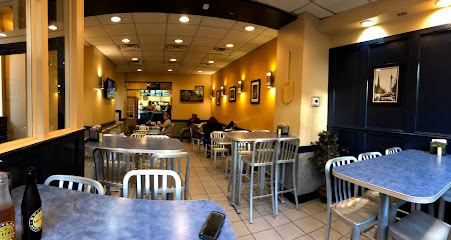
Sotto Sopra
Discover the rich flavors of Northern Italy at Sotto Sopra, an elegant dining experience in the heart of Baltimore.

Marie Louise Bistro
Experience authentic French cuisine at Marie Louise Bistro in Mount Vernon—an exquisite dining destination for every occasion.

Topside
Experience the best of Baltimore dining at Topside: where modern cuisine meets stunning city views in Mount Vernon.

Markets, malls and hidden boutiques
Zone
Explore a charming vintage clothing store in Baltimore's Mount Vernon, featuring unique apparel and exquisite costume jewelry.

Bottle of Bread
Explore the unique charm of Bottle of Bread, a vintage clothing store in Baltimore offering timeless fashion and sustainable shopping experiences.

The Doll House Boutique
Discover unique fashion pieces at The Doll House Boutique, an eclectic clothing store in the heart of Baltimore, perfect for style-savvy tourists.

Chickie and Company
Explore unique women's fashion at Chickie and Company in Baltimore's vibrant Bromo Arts District, where style meets individuality.
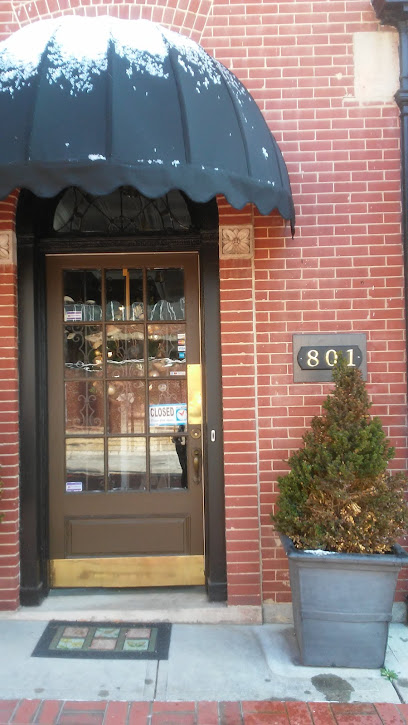
Whishful Looks
Explore unique women's fashion at Whishful Looks in Baltimore's Bromo Arts District, where style meets individuality and quality.

Museum Store
Explore The Museum Store in Baltimore, where art and culture converge to offer unique gifts and souvenirs inspired by the city's rich heritage.

Pyrate Beach
Explore Pyrate Beach in Baltimore: A unique shopping experience blending vintage clothing, art, and boutique treasures in a vibrant atmosphere.
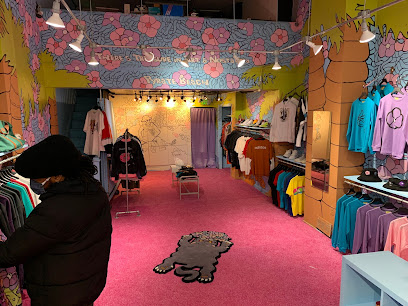
Adam Galaxy Vintage Showroom
Discover the enchanting Adam Galaxy Vintage Showroom, a haven for vintage clothing and unique collectibles in Baltimore's vibrant arts district.

Enigmatology
Explore Enigmatology in Baltimore for a unique vintage shopping experience, where every piece is a story waiting to be discovered.

WHAT'S IN STORE
Explore distinctive fashion accessories at What’s in Store, a charming boutique in Baltimore’s Midtown, perfect for unique finds and local styles.

Essential bars & hidden hideouts
The Owl Bar
Discover the charm of The Owl Bar in Baltimore, where delicious grill cuisine meets a vibrant bar atmosphere, perfect for any occasion.

Topside
Discover Topside, Baltimore's premier bar and restaurant offering stunning skyline views, delicious cuisine, and a vibrant atmosphere.

Sugarvale
Discover Sugarvale, a cocktail bar in Baltimore's Mount Vernon, offering innovative drinks and a welcoming atmosphere for an unforgettable night out.

Sangria Patio Bar
Experience the vibrant flavors of Spain at Sangria Patio Bar, Baltimore's go-to destination for tapas and cocktails.

Unity Bar & Restaurant
Savor the flavors of American cuisine at Unity Bar & Restaurant in Baltimore, where every meal is a journey through local tastes and vibrant ambiance.

Poets Modern Cocktails & Eats
Experience a delightful blend of American cuisine and craft cocktails at Poets Modern Cocktails & Eats in the heart of Baltimore's Mount Vernon.

Bloom's
Discover Bloom's, a vibrant bar in Baltimore's Mount Vernon, where expertly crafted cocktails and a lively atmosphere await every visitor.

B-Side Cocktails & Karaoke
Experience the lively mix of cocktails and karaoke at B-Side in Baltimore – where fun meets unforgettable nightlife.

The Drinkery
Discover the vibrant energy and welcoming atmosphere of The Drinkery, Baltimore's premier gay bar, where cocktails and community come together.

The Coral Wig
Discover the vibrant cocktail culture of Baltimore at The Coral Wig, a stylish bar known for its innovative drinks and welcoming atmosphere.

Local Phrases
-
- HelloHey
[hey] - GoodbyeSee ya
[see ya] - YesYeah
[yeah] - NoNah
[nah] - Please/You're welcomePlease
[please] - Thank youThanks
[thanks] - Excuse me/SorrySorry
[sorry] - How are you?How ya doin'?
[how ya doin'] - Fine. And you?Good. You?
[good. you?] - Do you speak English?You speak English?
[you speak English?] - I don't understandI don't get it
[i don't get it]
- HelloHey
-
- I'd like to see the menu, pleaseMenu, please
[menu, please] - I don't eat meatNo meat for me
[no meat for me] - Cheers!Cheers!
[cheers!] - I would like to pay, pleaseCheck, please
[check, please]
- I'd like to see the menu, pleaseMenu, please
-
- Help!Help!
[help!] - Go away!Leave me alone!
[leave me alone!] - Call the Police!Police!
[police!] - Call a doctor!Doctor!
[doctor!] - I'm lostLost
[lost] - I'm illSick
[sick]
- Help!Help!
-
- I'd like to buy...I wanna buy...
[i wanna buy...] - I'm just lookingJust looking
[just looking] - How much is it?Price?
[price?] - That's too expensiveToo much
[too much] - Can you lower the price?Lower price?
[lower price?]
- I'd like to buy...I wanna buy...
-
- What time is it?What time?
[what time?] - It's one o'clockIt's one
[it's one] - Half past (10)Half ten
[half ten] - MorningMorning
[morning] - AfternoonAfternoon
[afternoon] - EveningEvening
[evening] - YesterdayYesterday
[yesterday] - TodayToday
[today] - TomorrowTomorrow
[tomorrow] - 1One
[one] - 2Two
[two] - 3Three
[three] - 4Four
[four] - 5Five
[five] - 6Six
[six] - 7Seven
[seven] - 8Eight
[eight] - 9Nine
[nine] - 10Ten
[ten]
- What time is it?What time?
-
- Where's a/the...?Where's the...?
[where's the...?] - What's the address?Address?
[address?] - Can you show me (on the map)?Show me on the map
[show me on the map] - When's the next (bus)?Next bus?
[next bus?] - A ticket (to ....)Ticket to...
[ticket to...]
- Where's a/the...?Where's the...?
History of Mount Vernon
-
Mount Vernon, established in the early 19th century, was designed as a cultural and civic center for Baltimore. It was named after George Washington's plantation, reflecting the city's ties to the founding of the United States. The neighborhood's layout was influenced by the ideals of the American Renaissance, emphasizing public spaces and monumental architecture.
-
In the late 19th century, Mount Vernon became a hub for the arts, attracting writers, musicians, and artists. The Baltimore Museum of Art, established in 1914, serves as a testament to the neighborhood's commitment to culture. The area also hosts the Peabody Institute, founded in 1857, which has been crucial in fostering music education in the region.
-
Mount Vernon is renowned for its historic architecture, featuring a blend of Greek Revival, Italianate, and Romanesque styles. Notable structures include the Washington Monument, completed in 1829, which stands as a symbol of the city, and the Enoch Pratt Free Library, built in 1933, which underscores the neighborhood's dedication to public knowledge and accessibility.
-
The Mount Vernon neighborhood hosts several cultural events throughout the year, including the Mount Vernon Cultural District's annual arts festival. This celebration showcases local artists, musicians, and performers, reflecting the vibrant cultural tapestry of Baltimore and the community's commitment to preserving its artistic heritage.
-
In the latter half of the 20th century, Mount Vernon faced urban decline and neglect, similar to other neighborhoods in Baltimore. However, revitalization efforts in the 21st century have focused on restoring historic buildings, improving public spaces, and promoting community engagement, breathing new life into the area and attracting new residents and businesses.
Mount Vernon Essentials
-
Mount Vernon is centrally located in Baltimore and is easily accessible from various neighborhoods. From the Inner Harbor, you can take the Light RailLink northbound to the Baltimore Arena station, then transfer to a local bus (such as the 51 or 61) that heads towards Mount Vernon. Alternatively, a short walk of about 20 minutes will take you directly to Mount Vernon. From Penn Station, take a short taxi ride or use the Charm City Circulator, which has a route that stops in Mount Vernon.
-
Mount Vernon is a walkable neighborhood, with many attractions located within a short distance. The Charm City Circulator, a free bus service, has routes that connect you to various parts of the city, including Mount Vernon. For public transport, the Maryland Transit Administration (MTA) buses run regularly throughout the area. Biking is also popular; you can rent a bike from the local bike share program, Baltimore Bike Share, which has several stations in the neighborhood.
-
Mount Vernon is generally safe for tourists during the day, but as with any urban area, it is advised to stay vigilant, especially after dark. Areas surrounding the western edges of Mount Vernon may have higher crime rates, particularly at night. Avoid walking alone in dimly lit areas and be cautious of your belongings in crowded spaces.
-
In case of an emergency, dial 911 for police, fire, or medical assistance. The nearest hospital is the University of Maryland Medical Center, which is a short drive from Mount Vernon. Always have a copy of your travel insurance details and emergency contacts accessible. For non-emergency situations, the local police precinct and various urgent care clinics are available.
-
Fashion: Do wear comfortable walking shoes since the area is best explored on foot. Don't wear overly flashy jewelry to avoid attracting unwanted attention. Religion: Do respect the local customs when visiting historical churches, such as the Baltimore Basilica. Public Transport: Do give up your seat for elderly or disabled passengers. Don’t engage in loud conversations on public transport. Greetings: Do greet locals with a friendly 'hello' or 'how are you?'. Eating & Drinking: Do try local eateries and enjoy outdoor dining. Don’t consume alcohol in public spaces unless at designated areas.
-
To experience Mount Vernon like a local, visit the farmers’ market on Sundays for fresh produce and local crafts. Engage with locals at the neighborhood coffee shops, like the popular Café Poupon. Don’t miss out on the free outdoor events and concerts in the parks, especially during the summer months. Check local listings for art walks and exhibitions at the Baltimore Museum of Art, which is nearby.
Nearby Cities to Mount Vernon
-
Things To Do in Towson
-
Things To Do in Laurel
-
Things To Do in Annapolis
-
Things To Do in Silver Spring
-
Things To Do in Rockville
-
Things To Do in Gaithersburg
-
Things To Do in Bethesda
-
Things To Do in Frederick
-
Things To Do in Waldorf
-
Things To Do in Gettysburg
-
Things To Do in Lancaster
-
Things To Do in Harper's Ferry
-
Things To Do in Hagerstown
-
Things To Do in Hershey
-
Things To Do in Martinsburg











